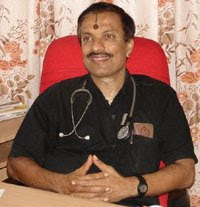Prevention of erectile dysfunction
http://www.health24.com/medical/Condition_centres/777-792-1446-1683,25452.asp
Prevention
Many erection problems can be prevented or even reversed by a more relaxed approach to sex and by rediscovering sensuality. Sexual intimacy is a form of communication. If you and your partner talk about your lovemaking, it will help reduce your stress and anxiety, so that your sexual activity becomes more relaxed. Many people avoid talking about problems in their sexual relationship. It may gradually become more difficult to get and maintain an erection as you get older. However, foreplay and the right environment can increase your ability to have an erection, regardless of your age.
Bicycle seats can cause impotence
If you’re a cyclist, it’s a good idea to lift out of your seat when you’re going over bumpy terrain. This could help avoid vascular damage that may lead to erectile dysfunction. Researchers found that the typical narrow, pointed bike seat can crush the arteries that fill the penis with blood. When a male sits on a narrow bike seat, too much weight is placed on the area between the anus and the scrotum, where the cavernosal arteries are located. Researcher Pedram Salimpour of the Boston University School of Medicine found that about four percent of cyclists studied suffered impotence, compared to one percent of runners. Salimpour says the problem can be avoided by using special bike seats with oval gaps, similar to a toilet seat.
Prevention
Many erection problems can be prevented or even reversed by a more relaxed approach to sex and by rediscovering sensuality. Sexual intimacy is a form of communication. If you and your partner talk about your lovemaking, it will help reduce your stress and anxiety, so that your sexual activity becomes more relaxed. Many people avoid talking about problems in their sexual relationship. It may gradually become more difficult to get and maintain an erection as you get older. However, foreplay and the right environment can increase your ability to have an erection, regardless of your age.
Bicycle seats can cause impotence
If you’re a cyclist, it’s a good idea to lift out of your seat when you’re going over bumpy terrain. This could help avoid vascular damage that may lead to erectile dysfunction. Researchers found that the typical narrow, pointed bike seat can crush the arteries that fill the penis with blood. When a male sits on a narrow bike seat, too much weight is placed on the area between the anus and the scrotum, where the cavernosal arteries are located. Researcher Pedram Salimpour of the Boston University School of Medicine found that about four percent of cyclists studied suffered impotence, compared to one percent of runners. Salimpour says the problem can be avoided by using special bike seats with oval gaps, similar to a toilet seat.
Labels: ED, ED remedies, erectile dysfunction, erection, impotence



